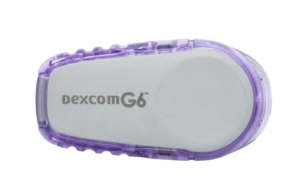
Following a breakthrough nod for Dexcom, CGMs may become a key part of hospital care.
As the early stages of the COVID-19 pandemic required action in many forms, continuous glucose monitors became an unexpected part of hospital care.
The FDA issued temporary guidance in April 2020 allowing for increased remote monitoring of hospital patients to limit contact with hospital staff and opportunities for COVID-19 transmission. That guidance extended to CGMs for the remote monitoring of people with diabetes.
Use of the technology in hospitals has always been of great intrigue for Scripps Whittier Diabetes Institute Corporate VP Dr. Athena Philis-Tsimikas, an adult endocrinologist who has been in practice for around three decades and has watched the development of CGMs since about 1999.
“[CGMs are] what we’ve been using to manage patients as I became more involved in having responsibility across our five hospitals and how we manage glucose within the hospital environment, setting targets and trying to get to targets,” Philis-Tsimikas told Drug Delivery Business News. “Looking at how quality metrics have changed over time in that environment, it occurred to me: Why can’t we use this great device and technology in the hospital environment?”
It’s a notion that’s been floated by Dexcom CEO Kevin Sayer, who in June 2020 said it represents a new market that the company could penetrate. Whether that happens hinges on the FDA, but “from the hospitals we spoke with, they have no intention of giving it up,” Sayer said.
On March 2, 2022, Dexcom received FDA breakthrough device designation for the use of its CGM in a hospital setting.
“What started as a response during the pandemic has shown promise as a better alternative to fingerstick blood glucose tests with greater quality of care and patient satisfaction,” Dexcom VP and GM of Hospitals Gil Rivas said in a news release.
Philis-Tsimikas wrote a protocol for CGMs in hospitals and said the first randomized controlled trial took place in 2015 with the idea of “let’s give it a try and just see what happens.”
When COVID-19 hit and caregivers couldn’t enter rooms as often or had to gear up with protective equipment, updates were needed. Common therapies like steroid doses affect blood sugar levels, so there had to be a way to follow and manage glucose levels with more aggressive intervention without entering patients’ rooms to test blood sugar 15 times per day, Philis-Tsimikas said.
The researchers stopped their trial and switched to a standard of care for high-risk patients in which they placed the CGM and set up a system for monitoring and intervention, as the FDA permitted at the start of the pandemic.
Now, with breakthrough device designation for Dexcom’s CGM, the possibilities have expanded.
“We’re planning on spreading this standard of care as long as the FDA is allowing us to use it as a standard of care,” Philis Tsimikas said. “Our plan is to spread it to three of our other [Scripps] hospitals. We’ve also received a significant funding grant from NIH to do more formal randomized control trials similar to the first one we did that looks at a blinded versus open population, doing an intervention to see how tightly can we manage those patients.”
Dexcom’s CGM was chosen because it offers more in this setting as far as alerts and how they can be received, Philis-Tsimikas noted, with other devices not having a continuous streaming and alert system, although competitors are “coming up to speed.”
CGM technology has come a long way over the years, with drastic improvements in calibration, accuracy and size.
“The method of transmitting the values has gotten better and easier and the connections are better with the way you can follow it and the alerts,” Philis Tsimikas said. “There’s been lots of progress — so much amazing progress — and I’m expecting more.”
While CGMs make certain aspects of managing glucose levels in the hospital easier, there’s room for improvement in this relatively new technology.
That’s why breakthrough designation is a massive step forward for Dexcom, she said, as the company can work hand-in-hand with the FDA to identify and overcome barriers to create the best offering possible.
Among those barriers is device placement. Nurses and physicians have to be trained to use them, and providers have to be notified of what the alerts and trends mean and how accuracy and comparison levels work.
Philis-Tsimikas said CGM technology is in a transition period in hospitals and still needs streamlining and smoothing out before it becomes more routine and common in that environment.
“That’s the beauty of the breakthrough designation,” Philis-Tsimikas said. “It’s going to allow you to make this transition. Once you’re at that endpoint, it becomes much easier.”

